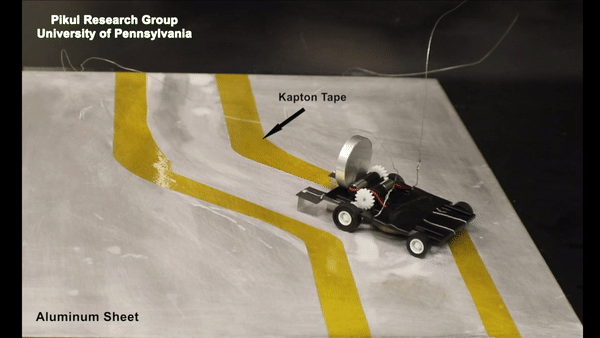
James Pikul, assistant professor in Penn Engineering’s Department of Mechanical Engineering and Applied Mechanics, and lab member Min Wang recently hosted Philadelphia Inquirer science reporter Tom Avril at the Singh Center, showing off their latest creation: a miniature robotic car that “eats metal and breathes air.”
This kind of biologically inspired energy harvesting is made possible by the Pikul Lab’s “environmentally controlled voltage source,” or ECVS. These devices provide electricity in a steady stream much like batteries do, but break down chemical bonds found in metal surfaces they’re in contact with, rather than carrying those chemicals with them.
Last month, Pikul, Wang and colleagues published a study in the journal Advanced Intelligent Systems that showed how their robotic car could be made to avoid obstacles in search of its next metallic meal. With different ECVS units controlling the wheels on each side, the car automatically turns away from surfaces it can’t harvest energy from.
Seeing the robot in action, Avril described what future iterations of the technology might be used for.
It is small — little bigger than a deck of playing cards — but that’s the point. Pikul envisions that the concept could be used in self-powered robots that are even smaller, approaching the size of insects. Such a device could be equipped with sensors to detect leaks as it crawls along a metal pipeline, or fitted with a camera to locate survivors as it clings to the beams of a collapsed building, he said.
Continue reading “No battery? No problem. At Penn, a mini-electric car draws energy from its surroundings” at the Philadelphia Inquirer.
